white marble, yellow marble and bronze parts
Signed «A. Rondoni / Roma» at the base
The work was declared of exceptional cultural interest (pursuant art. 13 of Legislative Decree 42/2004) and therefore notified by the Italian Superintendency.
Sira is a splendid statue by the Novara sculptor Rondoni.
The subject is taken from a historical novel in vogue during the years of its creation, Fabiola or the Church of the Catacombs, written by the Irish archbishop Nicholas P. Wiseman in 1854. The book is set during the persecutions of Diocletian: Sira, a young Christian originally from the Middle East, has become the slave of the daughter of a rich Roman merchant, the beautiful and cruel Fabiola. The servant, faithful to her faith, has as her goal the conversion of her mistress and professes without any fear the equality of all men. Fabiola, hearing Sira's words and enraged by the offense received, wounds her as punishment with a stiletto.
The young woman is portrayed here immediately after receiving the blow: her face, turned towards the wound, is contrite in a resigned grimace of pain; with a finger she tries in vain to cover the cut, from which three large drops of blood flow. The figure wears large earlobes, while on the wrist she wears a bracelet decorated with Greek crosses and the monogram of Christ, “chirho”, a symbol of his faith. The small head culminates in thick, woolly curls, tied in the Greek style.
The torsion of the body, due to the sudden jerk of the bust and accentuated by the yellow marble drapery, makes the figure as tragic as it is seductive; the hidden eroticism of the work is reinforced by the shoulder straps of the figure’s clothes, which fall loosely on the forearms, revealing the soft, bare shoulders. In this scene so full of pathos, the girl appears more similar to a Moorish Aphrodite than to a Christian martyr.
This work is presented in several versions, the first exhibited to the public dating back to 1873 and taken to the Universal Exhibition in Vienna; another follows the following year, made of white marble and presented at the Exhibition of Works of Fine Arts in the Palazzo di Brera.
In 1877, in conjunction with the subject of the Drunken Bacchante, he exhibited another version at the National Exhibition of Naples, which was then purchased by the State and placed in the GAM of Rome; since 1920 it has been in the Civic Gallery of Modern Art of Palermo. In the following years Rondoni re-proposed the highly acclaimed Sira with some executive variations for the Exhibitions of Paris, Turin, Rome and London. The sculpture presented here is the only multi-material Sira to which, in addition to bronze and white Carrara marble, Rondoni added yellow Siena marble; the black stone base is decorated with a mosaic composed of gold and cinnabar tiles, completed by a column on which the original revolving mechanism conceived by the artist is placed.
BIOGRAPHY
Alessandro Rondoni was born in Terdobbiate, in the province of Novara in 1841. He enrolled at the Accademia Albertina in Turin, where he trained under the guidance of the naturalist sculptor Vincenzo Vela.
In these years he was commissioned to create a monument dedicated to the Marignoli family from Spoleto in Perugia; among his works, there is also a medallion depicting the benefactor Pasquale Biroli, who upon his death in 1830 donated some buildings to the Maggiore hospital in Novara to be converted into buildings for the care of the sick. He took part in various exhibitions, including the Turin promotor of 1860, where he brought a Head of a Putto; in 1873, he presented the first version of his very elegant Sira, in marble and bronze, at the Universal Exhibition in Vienna, of which we have evidence in the words of the architect Camillo Boito. The sculpture was so successful that the artist was awarded an "Art Medal" by the Commission. In 1879, the chronicle of the time indicates that he was exhibited in Rome with the works Amore, Fauna and Modestia, and then exhibited the sculptural group Canestro di nozze, exhibited in 1884, and Lezione and Sogno d’Amore exhibited in 1898. Unfortunately, after this date there is no more official news of Rondoni.


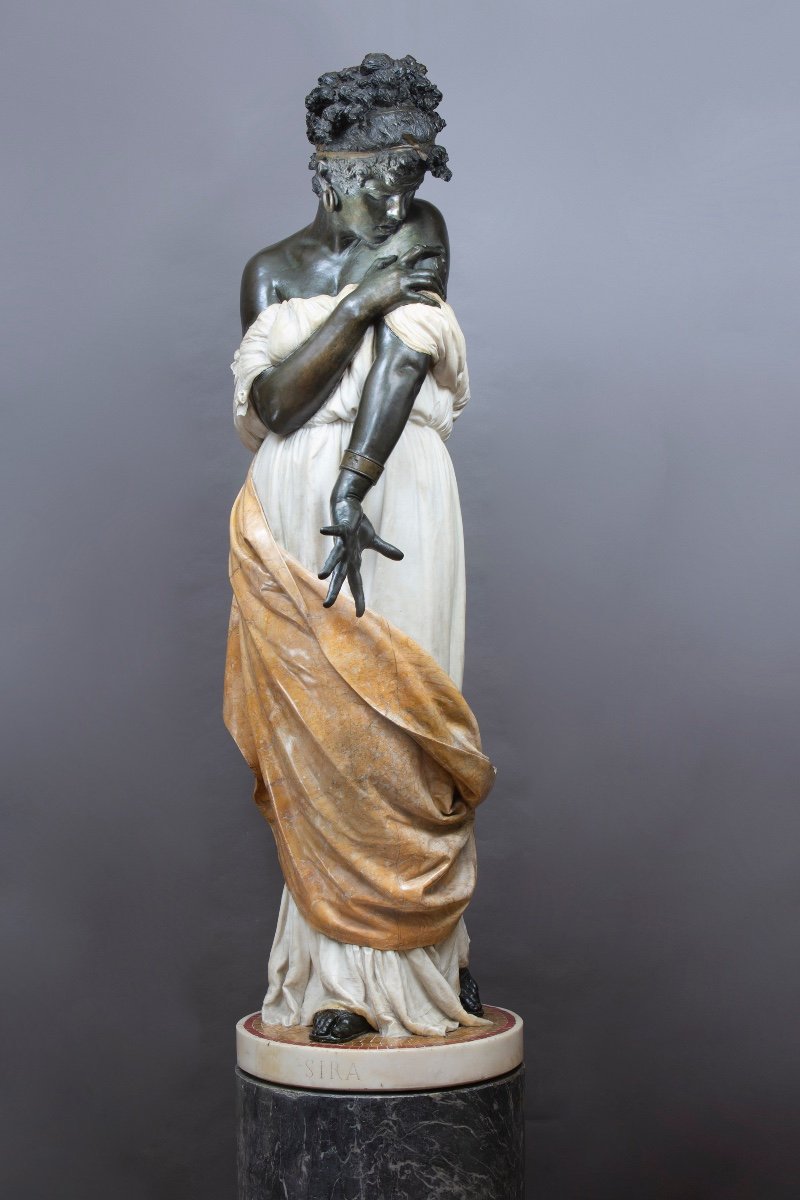




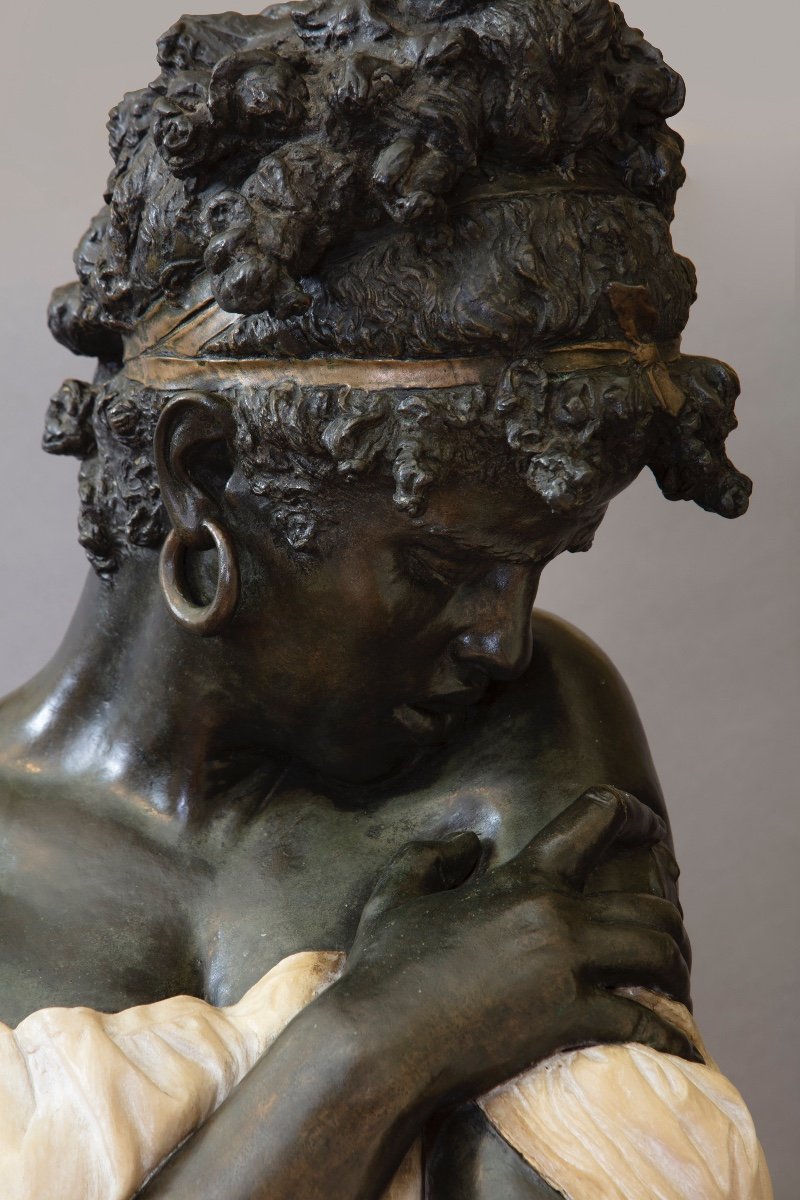














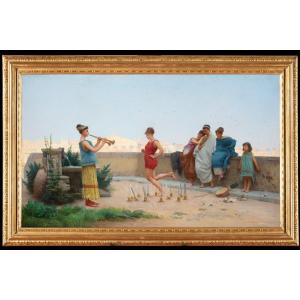










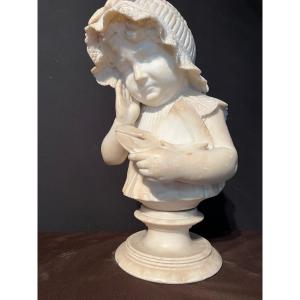
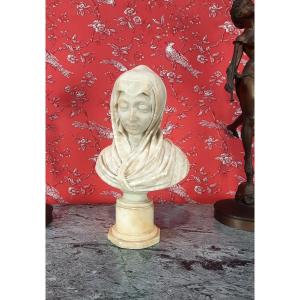



 Le Magazine de PROANTIC
Le Magazine de PROANTIC TRÉSORS Magazine
TRÉSORS Magazine Rivista Artiquariato
Rivista Artiquariato